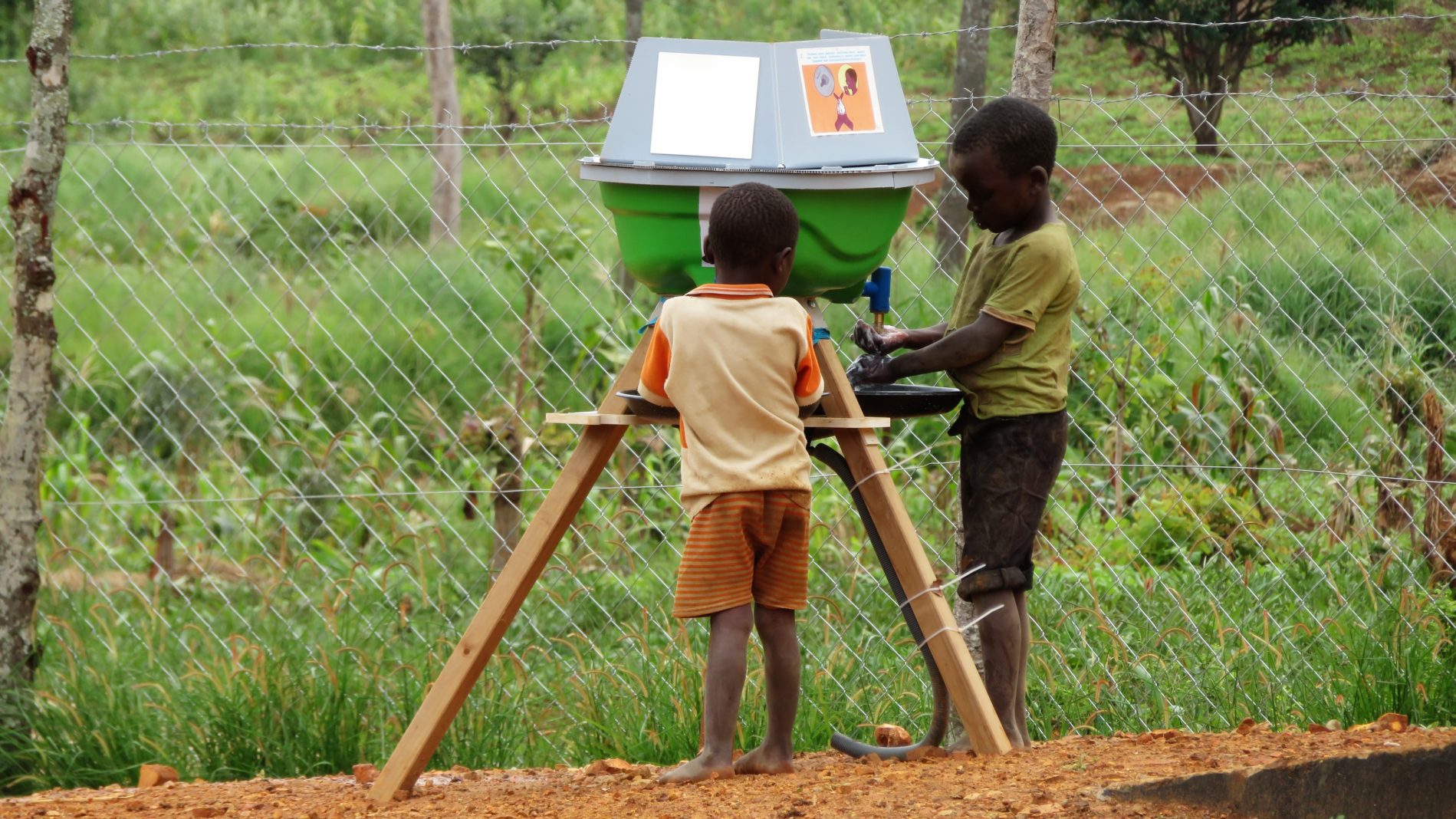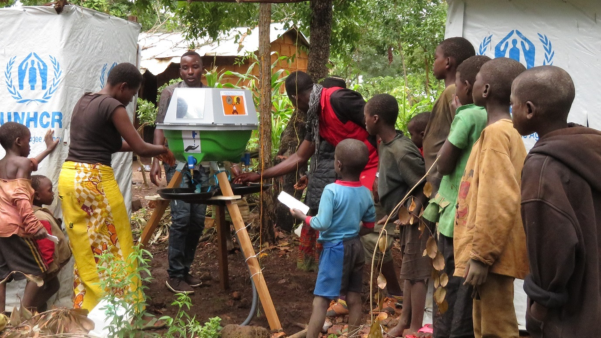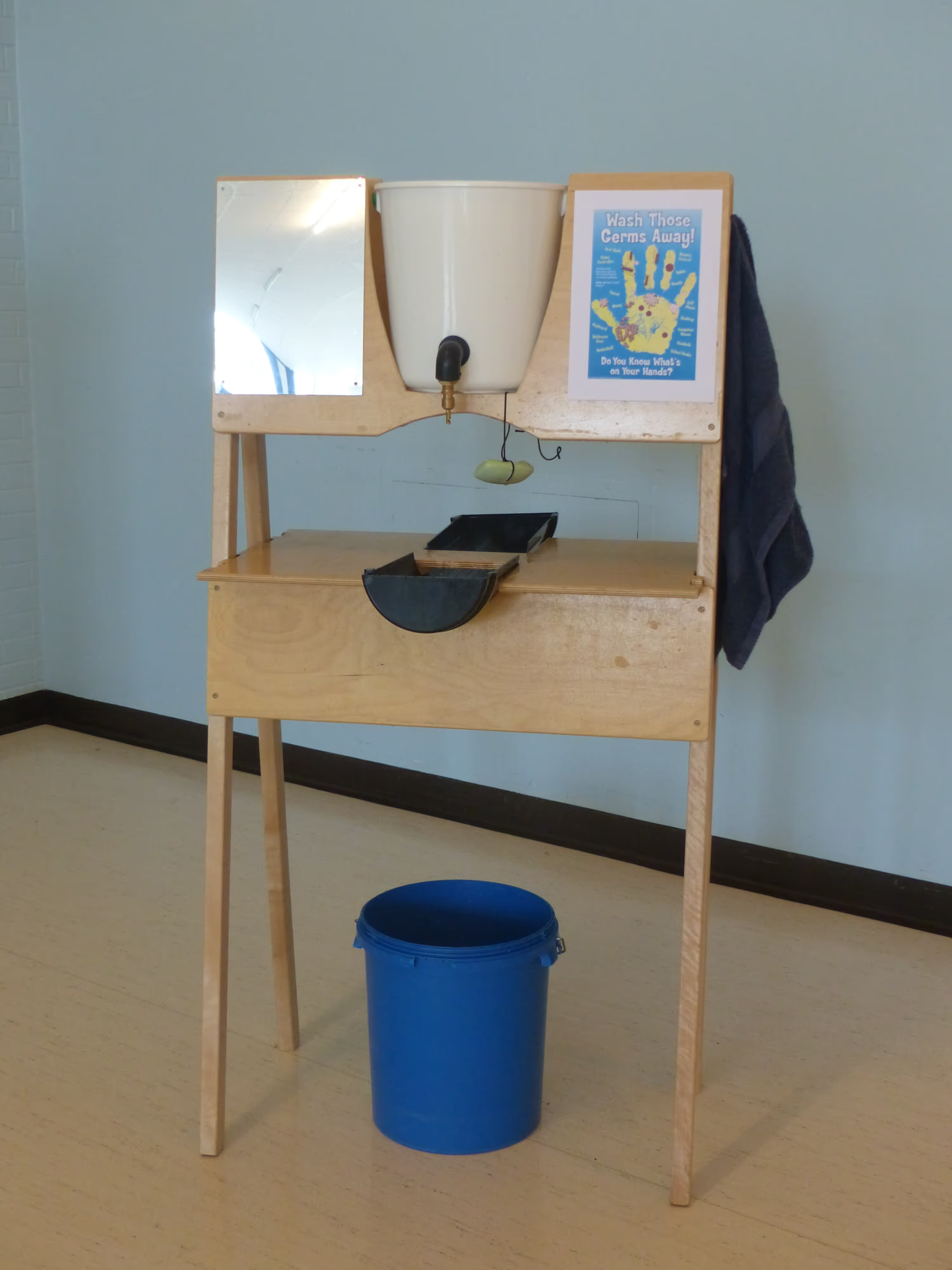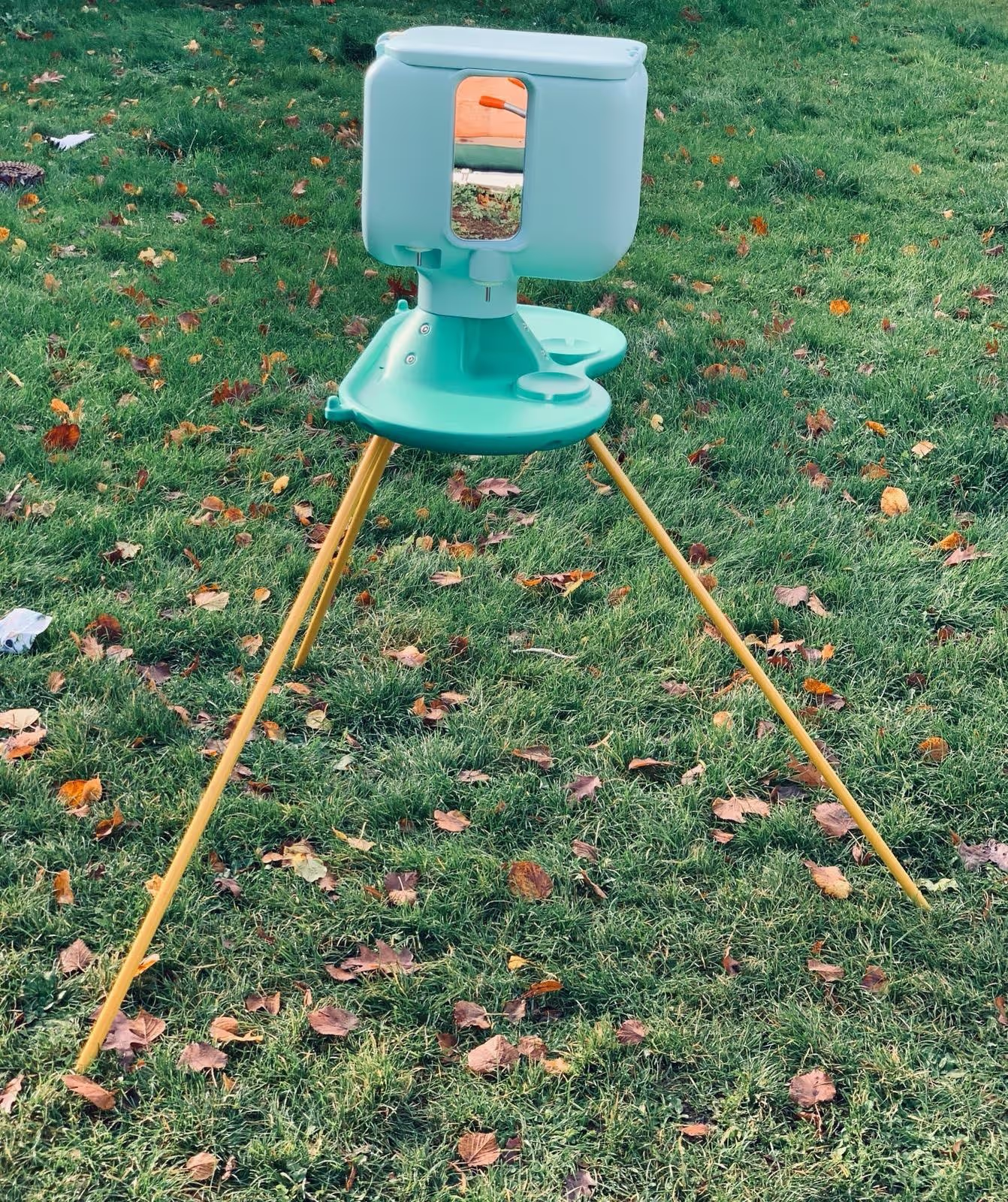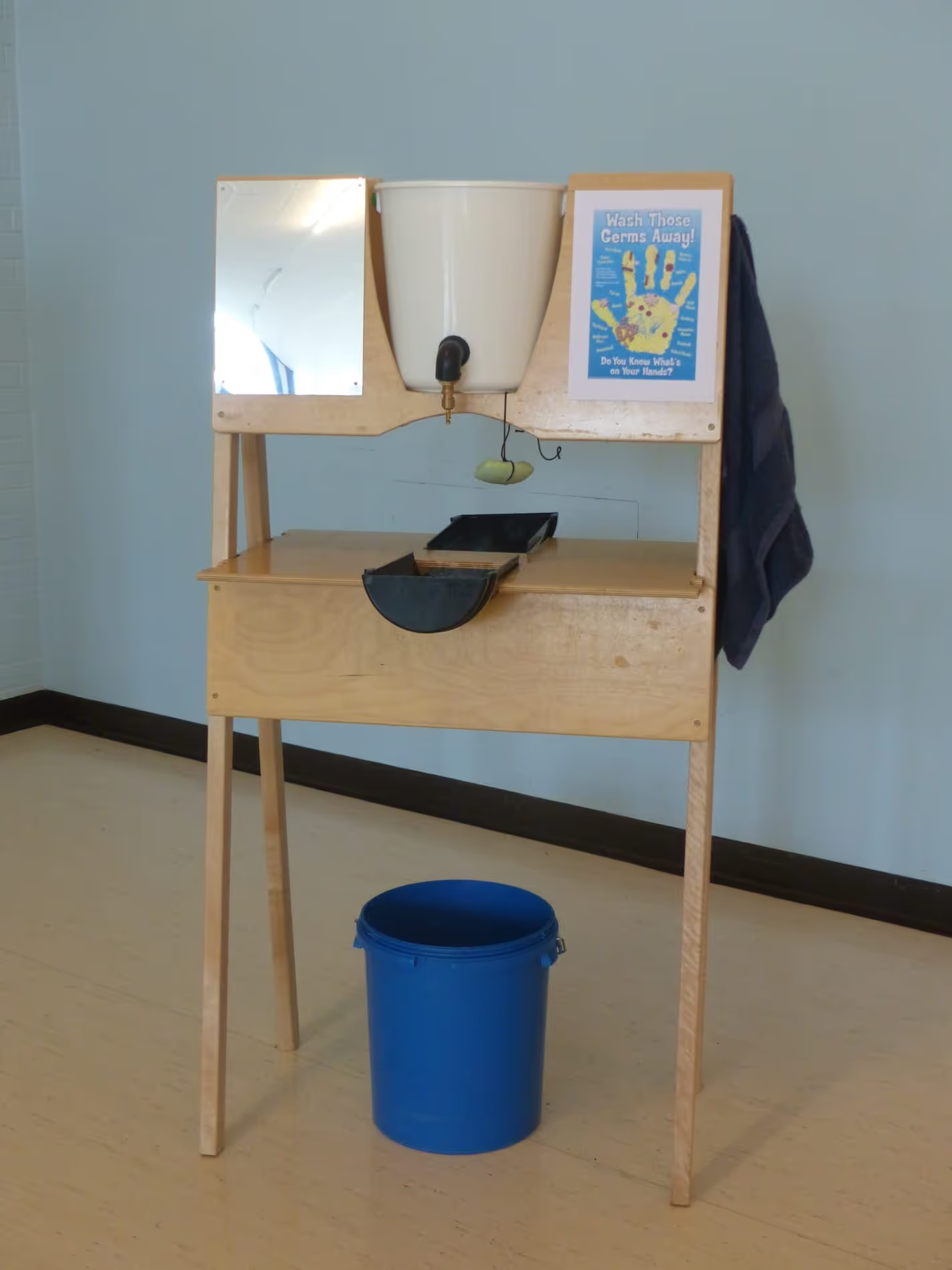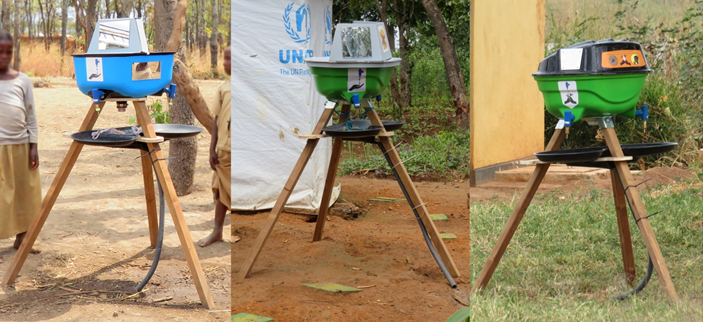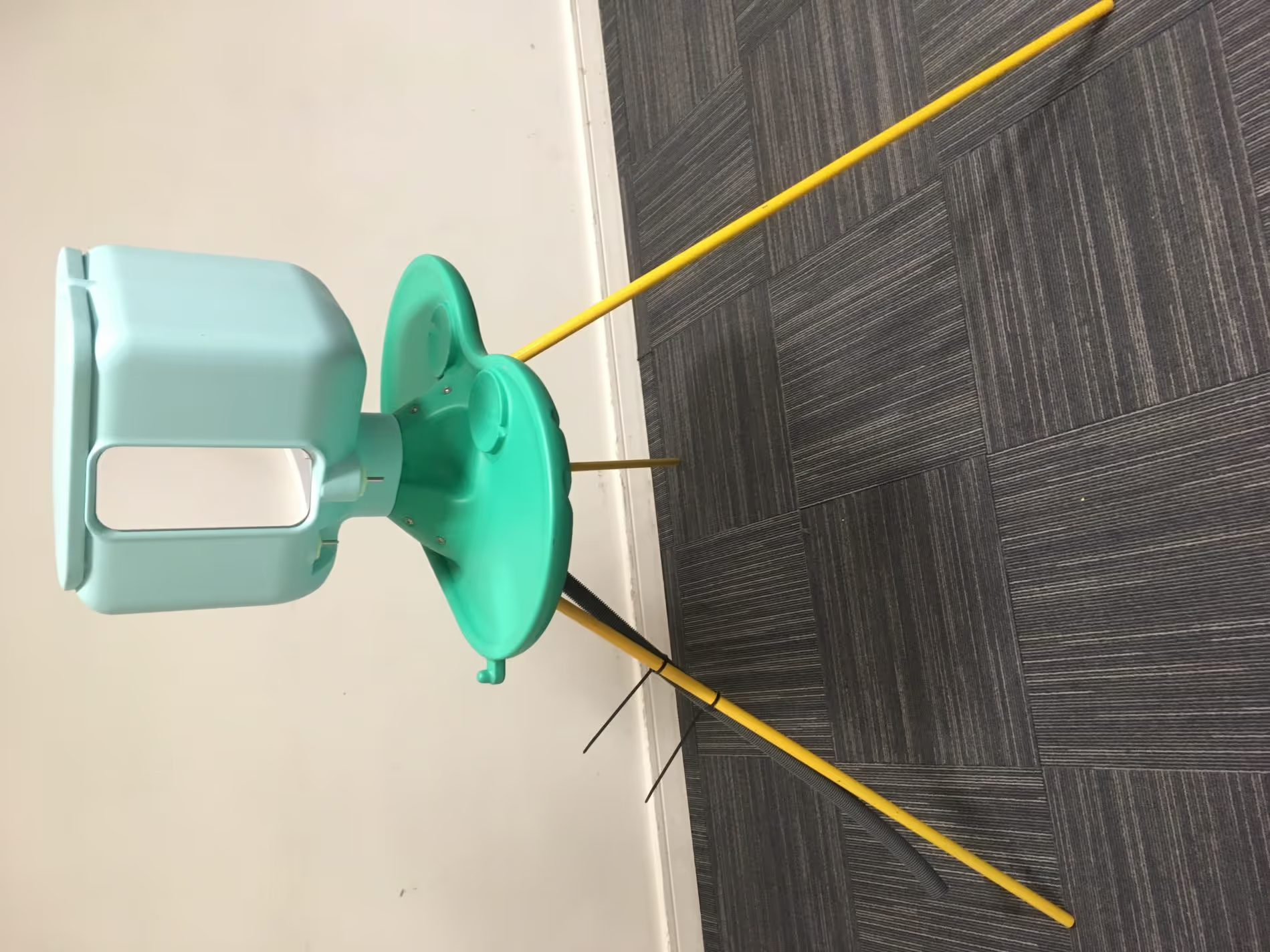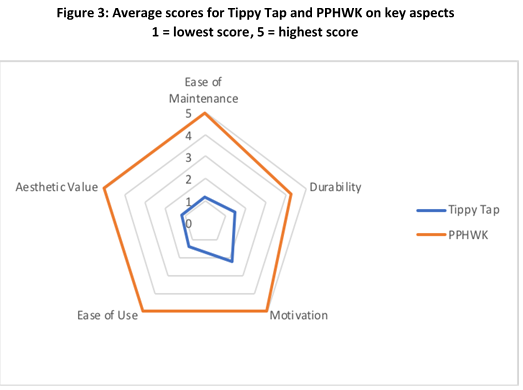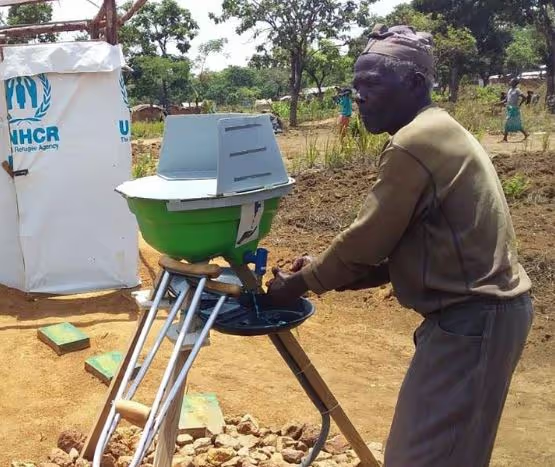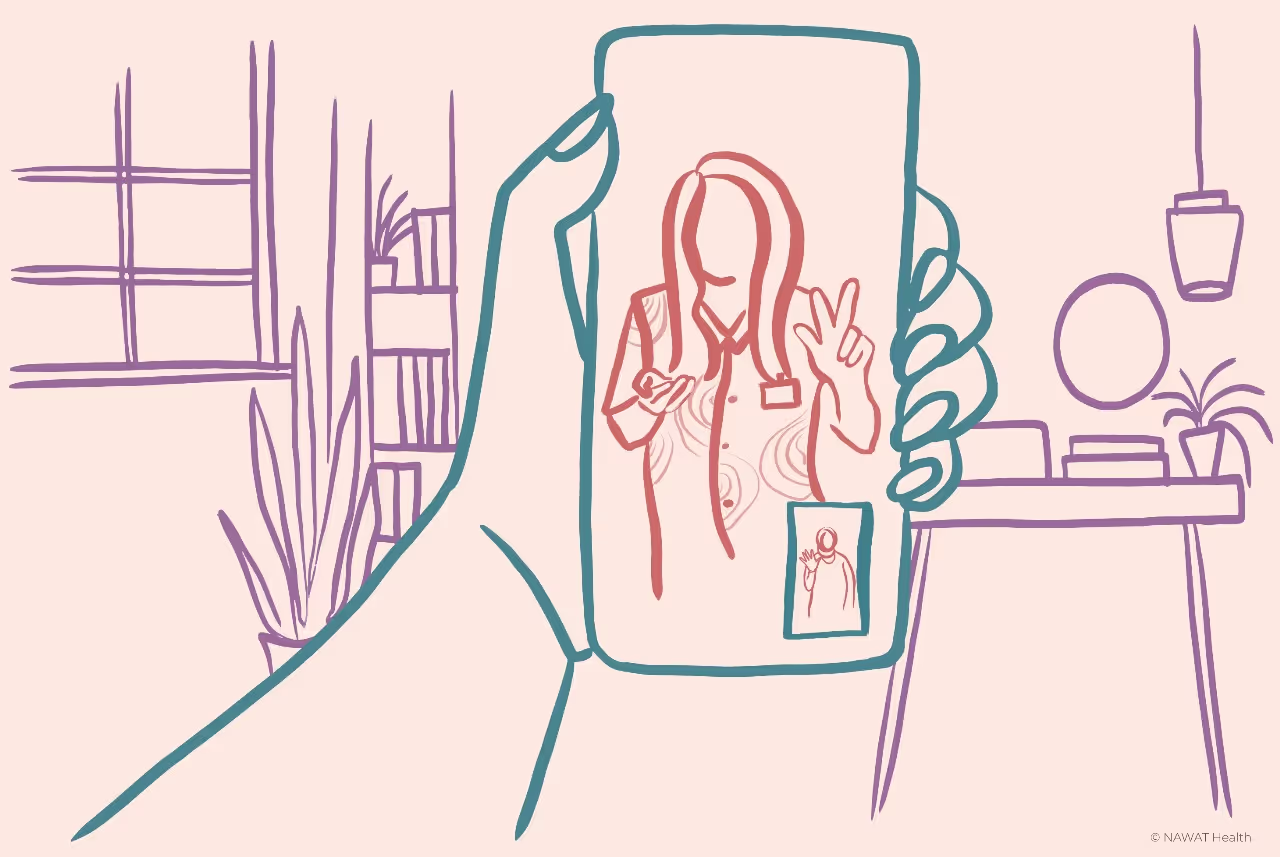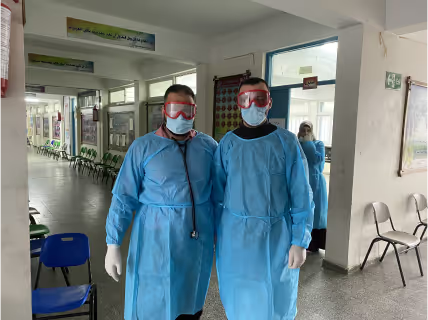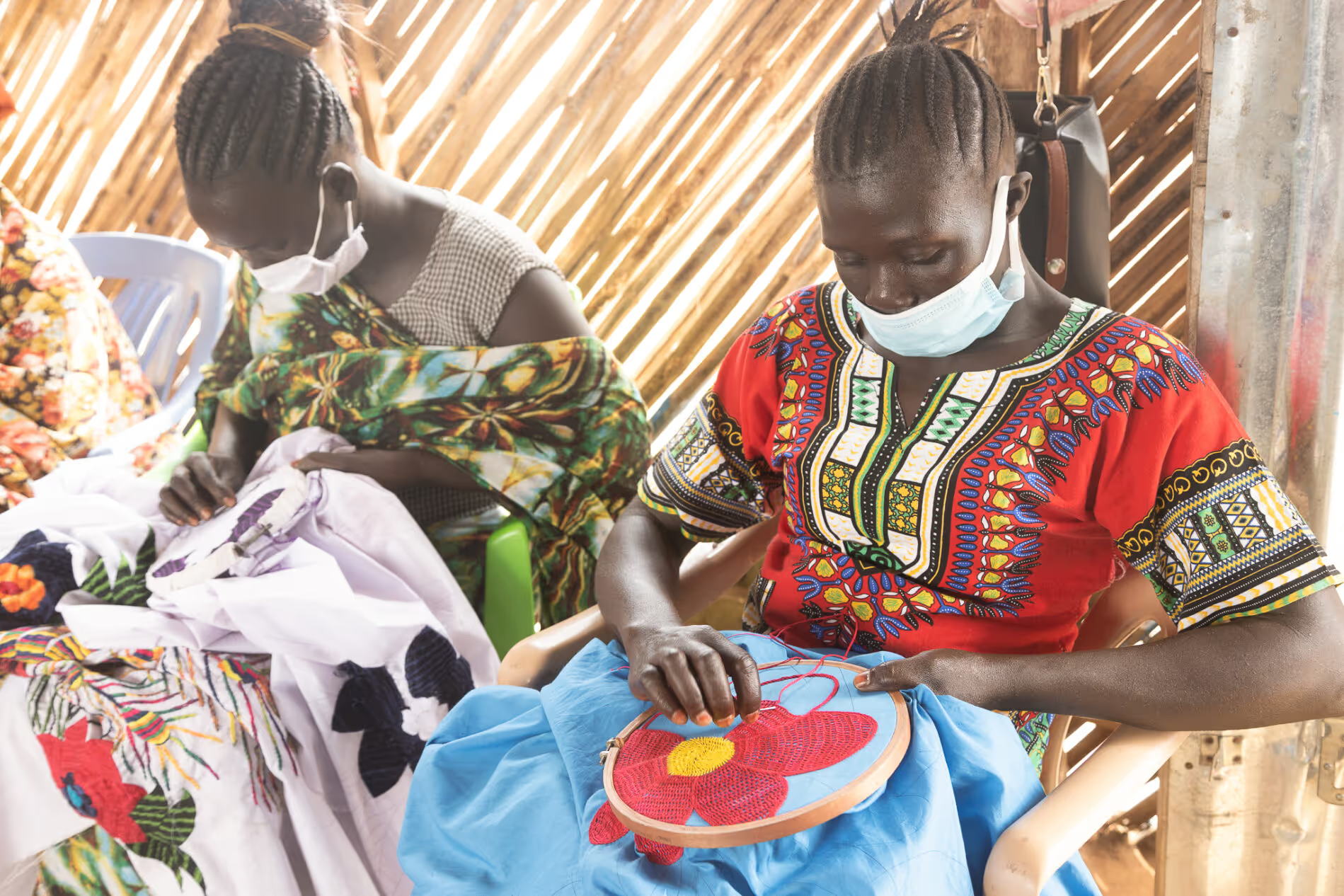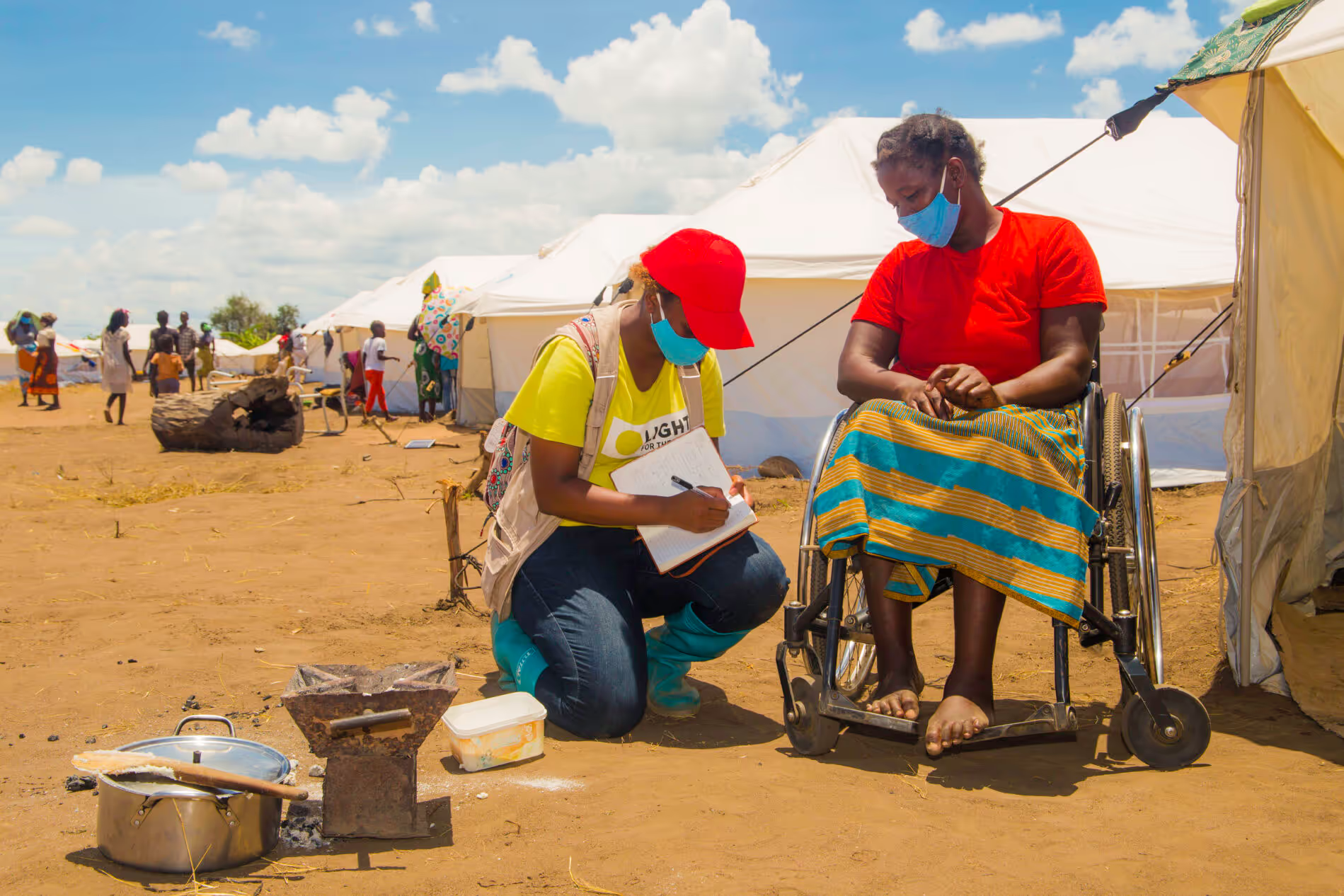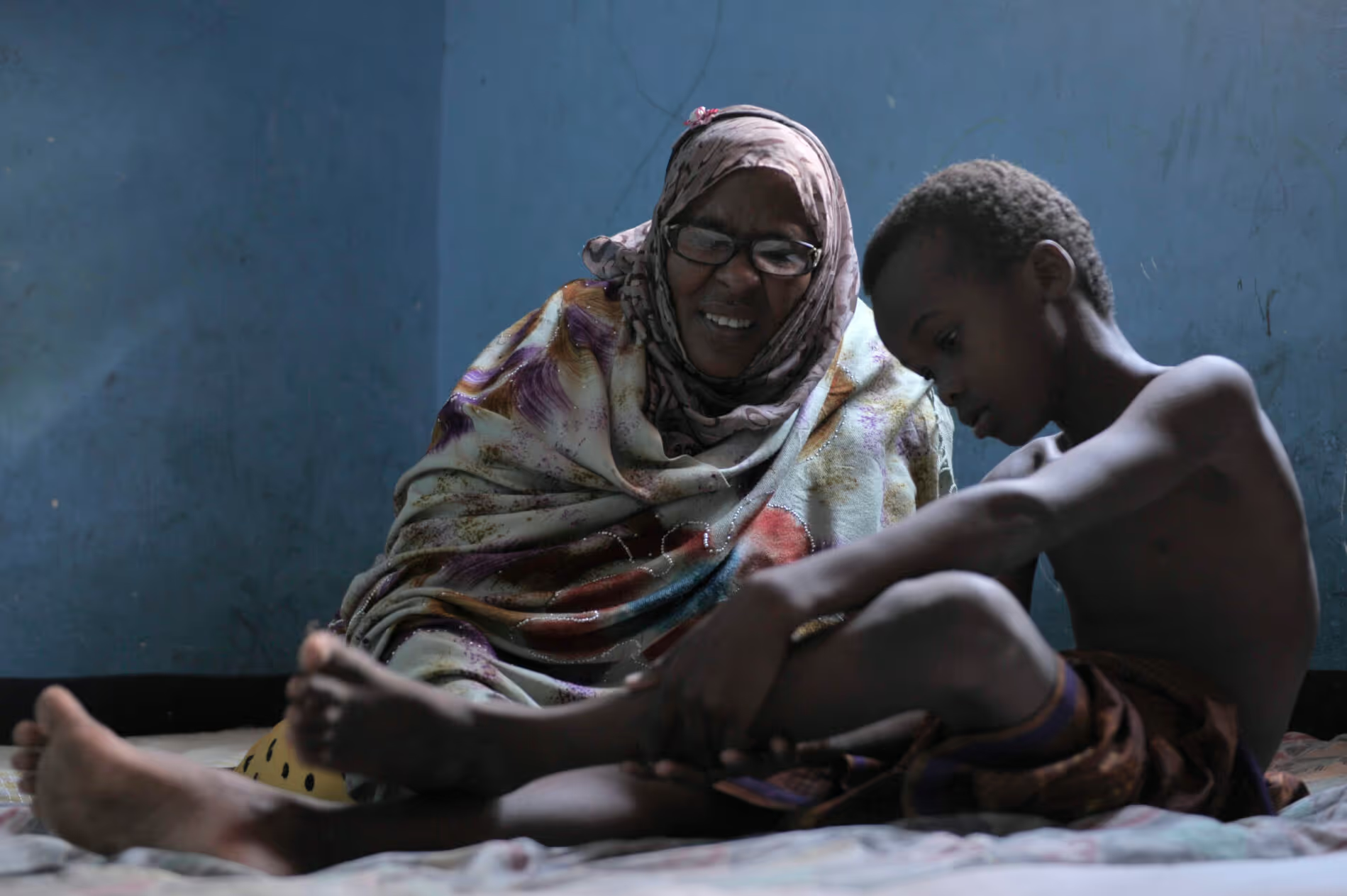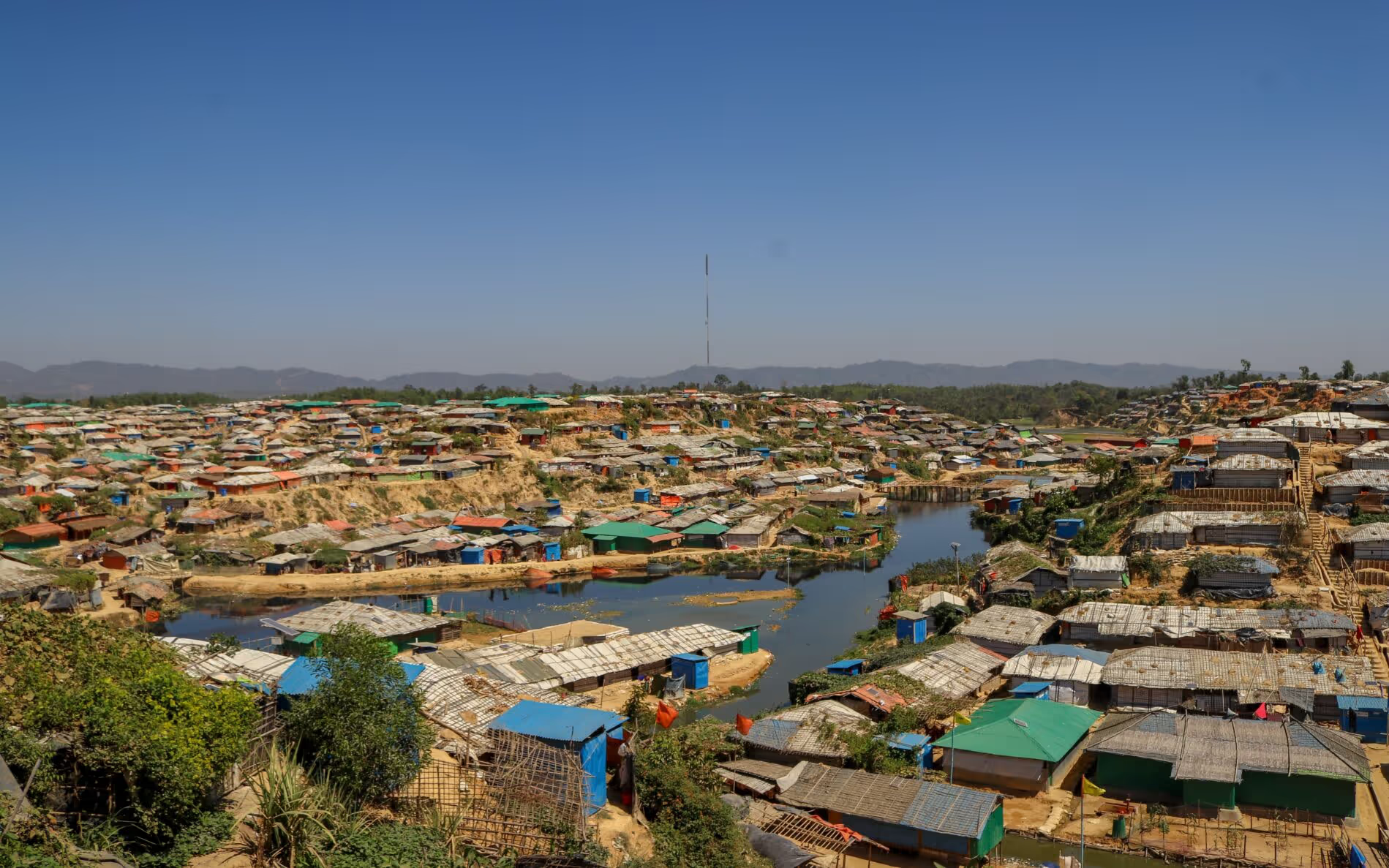Oxfam Handwashing Stand
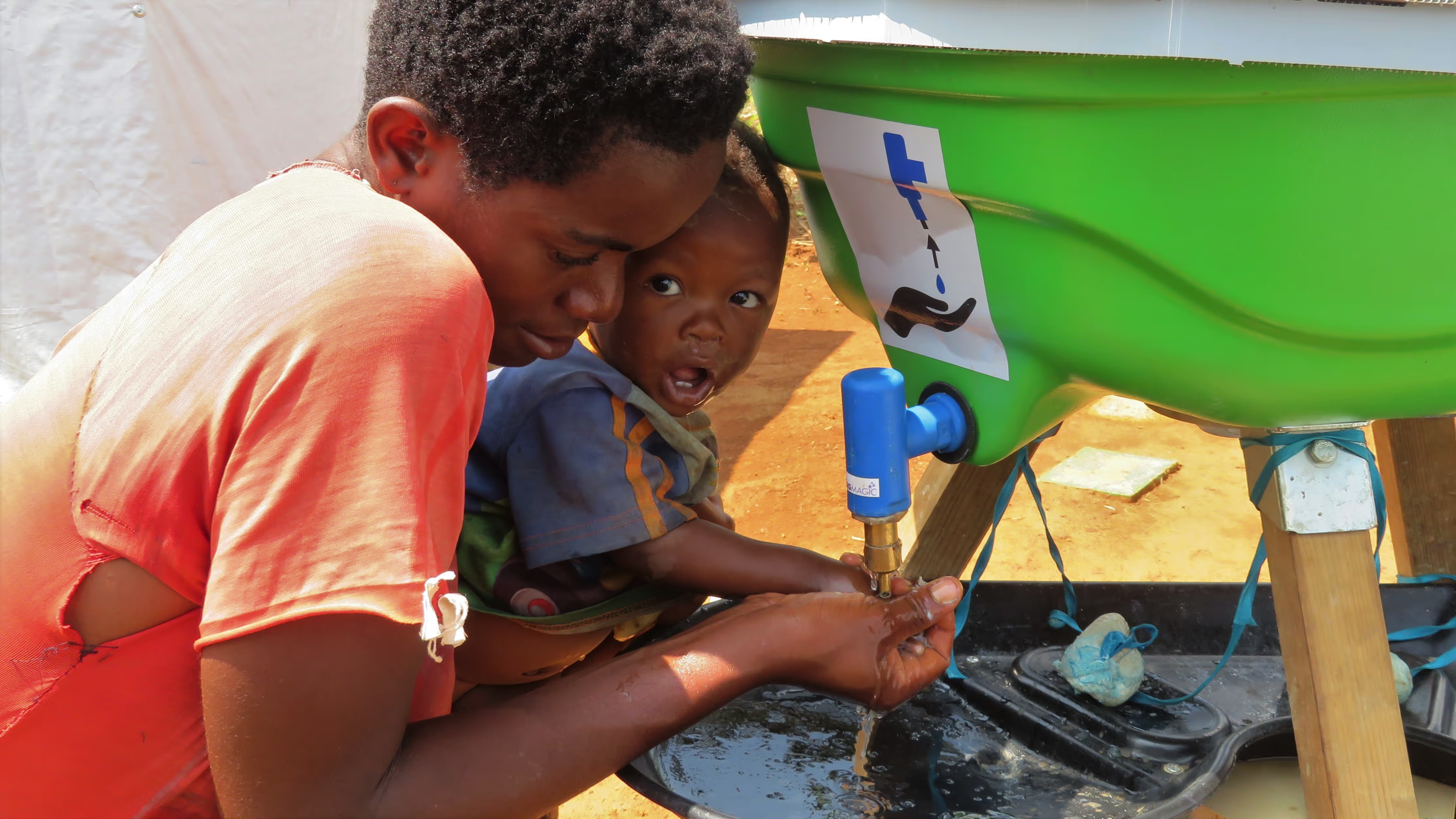
Project overview
The innovative Oxfam Handwashing Stand (OHS) is the product of over six years of consultation, design, field testing and adaptation based on user feedback. The final design features a large water tank, with chambers for clean and soapy water, handwashing reminders, mirrors and the ‘HandyWash’ water dispenser – a robust, low-cost, light and water conserving one touch tap. This kit will improve humanitarian practice by allowing for quick and easy installation of self-contained handwashing stations alongside latrines in displacement camps, avoiding the generally late provision of poor quality facilities which discourages vital handwashing.
Countries
Bangladesh
Democratic Republic of Congo
Ethiopia
Tanzania
Uganda
Organisations
Oxfam GB
Partners
Dunster House Ltd., Spark Design, Beech Grove Academy, Royal College of Arts, London School of Hygiene and Tropical Medicine, Gambella University, icddr,b, ISDR DRC, Save the Children, NGO Forum and Brac.
Area of funding
Humanitarian Innovation
Grant amount
343318
Start date
13
October
2020
End date
13
October
2021
Project length (in months)
12.2
Focus areas
No items found.
Topics
No items found.
Status
Closed
Project solution
This project offers [specific solution or intervention] to tackle [challenge]. By implementing [strategies, tools, or innovations], the project aims to achieve [desired outcomes]. The approach is designed to [specific actions or methods] to bring about meaningful change in [community, region, or issue area].
Expected outcomes
This project aims to achieve [specific outcomes], such as [measurable results, improvements, or changes]. The expected impact includes [benefits to the target community, advancements in research or innovation, or long-term effects]. By the end of the project, we anticipate [specific changes or milestones] that will contribute to [broader goals or objectives].
No items found.
WHAT IS THE HUMANITARIAN NEED?
Handwashing in emergencies saves lives by preventing the spread of WASH-related diseases: handwashing with soap has a greater impact on reducing deaths from diarrhoeal disease than any other single intervention. Yet there is no standardised kit for handwashing in humanitarian contexts, when reduced resources make it more difficult for people to manage their hygiene.
Too often in emergency settings, the lack of quickly assembled, readily available, self-contained kits for communal handwashing facilities means these stations are not ready to install alongside latrines – a key failure to supply a safe, healthy sanitation and hygiene response for people in crisis. Existing stations require technical knowledge and several hours to install, and procuring local components can take up to a year. Many of these stations are not easily used or dignified – they are often messy, clumsy, and without drainage.
WHAT IS THE INNOVATIVE SOLUTION?
Designed and developed by Beech Grove Academy students in partnership with Oxfam, the first prototype of the OHS, then called the Promotion and Practice Handwashing Kit, had an ‘A-frame’ superstructure capable of holding different locally-available water containers combined with soap, handwashing reminders, and the ‘HandyWash’ water dispenser. The attractive design was height-adjustable for children and wheelchair users and easy to use and maintain, providing dignified handwashing facilities for people in crisis.
This prototype was used to develop three further OHS iterations in collaboration with The Royal College of Arts, Spark Design and Dunster House manufacturing. The evolution in design can be seen in the blogs at the bottom of this page. Each new prototype was field tested in Nduta Refugee Camp, Tanzania and in Kyaka Refugee Camp in Uganda, and the feedback of users further influenced design adaptions. The final product – the OHS – is the result of six years of innovative design, collaboration, field testing and adaptation to find a product that addresses the major gaps and challenges for handwashing in emergencies.
This kit improves humanitarian practice by allowing for quick and easy install of self-contained handwashing stations alongside latrines in displacement camps, avoiding the generally late provision of poor quality facilities which discourages vital handwashing.
WHAT ARE THE EXPECTED OUTCOMES?
The kit was expected to facilitate better access to handwashing facilities for women, men, and children living in displacement camps – including disabled persons and the elderly. In a recent trial of the OHS at scale, the station – easy to use and install – increased handwashing rates and therefore supported in lowering incidence of disease, providing people with health and dignity and satisfying the basic need of effective, readily available water and sanitation facilities in times of crisis. Easier maintenance and management helped conserve scarce water resources and durability makes the station suitable for long-term sustainable use.
The kit also saved cost and time as humanitarian actors and their logisticians currently spend considerable time sourcing and installing components for other handwashing solutions. The time and cost savings on limited resources ultimately allowed humanitarian actors to reach more
SCALING UP
A further Humanitarian Innovation Fund grant allowed Oxfam to test the suitability of the OHS at scale, deploying 2400 kits in three countries: Bangladesh, Ethiopia, and DRC. The stations were installed in latrines, schools, health facilities, public settings, and in host communities. Alongside installation of the OHS, Oxfam used Mum’s Magic Hands, a set of promotional activities that promote handwashing using emotional motivators. A series of structured observations, spot checks and surveys and discussions were held with users and staff to evaluate the uptake of the new design. The findings show an observed increase in handwashing with soap of 60% across the three countries as compared to a baseline study prior to observation. Installation of the OHS increased access to handwashing facilities during a critical time in the COVID-19 pandemic, including access for children and people with physical disabilities, allowing two people to wash their hands simultaneously whilst allowing for social distancing to be observed. At the end of the testing period, 99% of facilities remained fully functional after 6 months of use.
Since the success of the scale up project, a total of 4,000 handwashing stations have been distributed across 9 countries, reaching over 50,000 people. Oxfam hopes that the success of this pilot at scale will encourage further adoption of the design, and that the stations can be used across humanitarian contexts to promote handwashing and save lives.
Read the Humanitarian WASH Innovation Catalogue
Learn more about this WASH project, and many others, in our Humanitarian WASH Innovation Catalogue.
[.cta_link]Read now[.cta_link]
No items found.
Project delivery & updates
Stay up to date with the latest developments from this project. Here, you will find details on what has been delivered, resources created, and regular updates as the project progresses. Access key documents, reports, and other materials to see how the project is making an impact.
No resources/updates have been published yet for this project. Sign up for our newsletter to stay informed about upcoming publications and updates!
Join our Newsletter
Resources
No items found.
Latest updates
No items found.
